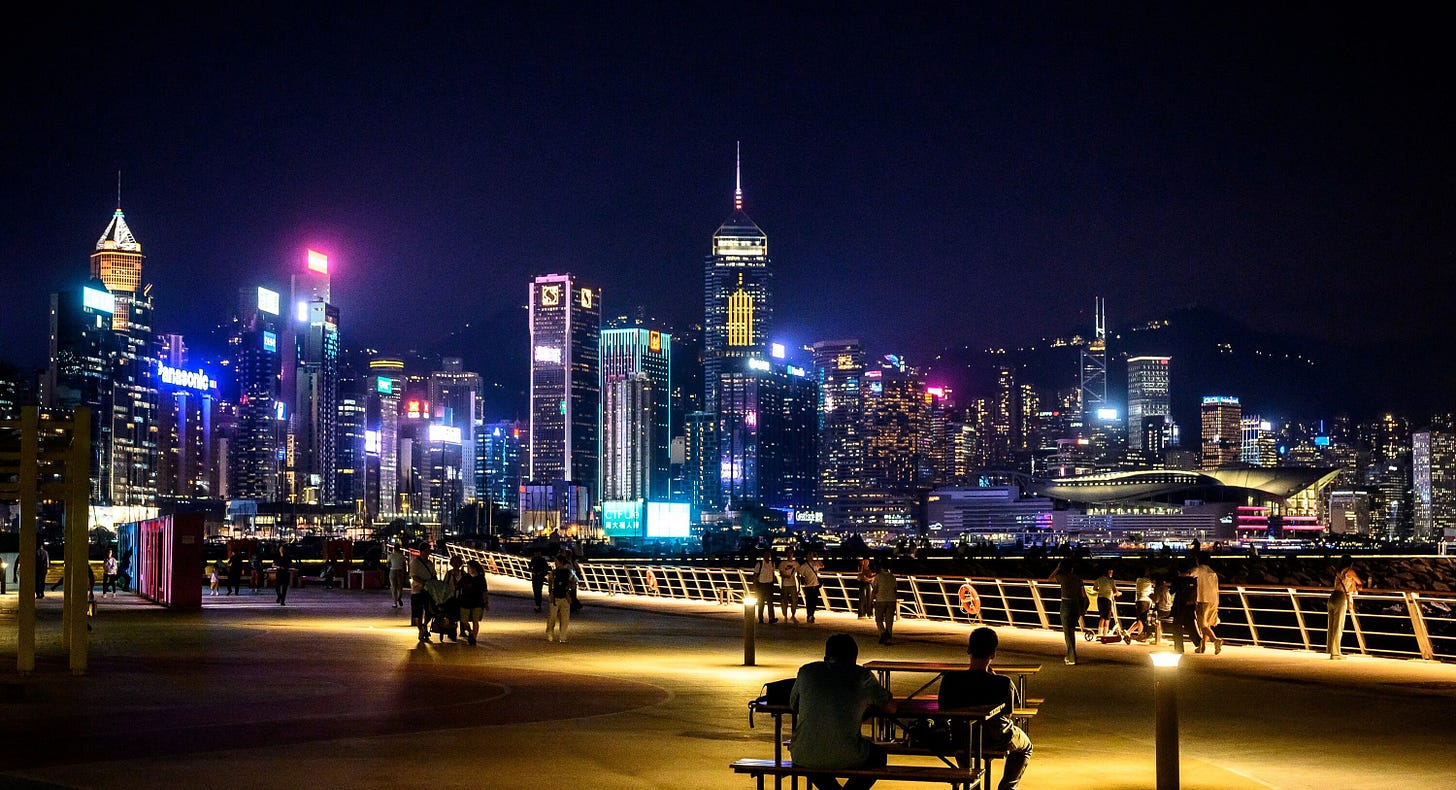Ravers Are Designing a New East Asian Future
They’re sick of cyberpunk.
When Ridley Scott, director of the 1982 version of Blade Runner, was asked by the Los Angeles Times what he imagined the future would look like, his answer was, “Hong Kong on a very bad day.” When the science fiction film finally came out, you could see that Scott was serious. The setting looked exactly like a dreary, more depressing version of Hong Kong. It was always dark. You wouldn’t see anything, if not for the neon signs on skyscrapers with ads from large conglomerates, or from the blue-green glow of streetlights casting a sickly shadow on the city’s inhabitants. The city was showered in endless rain, where the high-tech and the analog collided in messy disarray. Were these scenes from a film about robots going rogue, or a day-in-the-life of an expat walking through Hong Kong during monsoon season?
Scott was not alone among his contemporaries. Mamoru Oshii, director of Ghost in the Shell (1995), said his first point of reference for a futuristic city was also Hong Kong. As some video essayists illustrate, the reason is that there is no better setting to question rising inequality, late stage capitalism, and who is left behind in our pursuit of “the future” (which science fiction does) than a city where the world’s finest hotels sit kilometers away from cage homes or where family owned noodle shops compete with Michelin-starred restaurants for customers at lunchtime (which Hong Kong is). Besides, the Hong Kong skyline has always looked a little futuristic.
As East Asian cities like Seoul, Shanghai, and Taipei developed toward the end of the millenium, they too became “cyberpunk”—places to explore humanity’s future with technology. Shanghai’s skyline is just as colorful and inviting as Hong Kong’s. South Korea’s four chaebols (family-owned conglomerates) hold an iron grip over the country in a way that makes American capitalism look like a socialist utopia. In the cyberpunk novels that followed Blade Runner, Tokyo is often the setting of choice.
“When you say the word ‘cyberpunk,’ the immediate connotation is hopelessness, depravity, despair,” says Farhana JH, a local rave poster designer from Hong Kong. “I don’t feel like that’s the vibe anymore.” Can there be another visual language that captures what it’s like to live in an East Asian city?
Keep reading with a 7-day free trial
Subscribe to THE CHOW to keep reading this post and get 7 days of free access to the full post archives.




